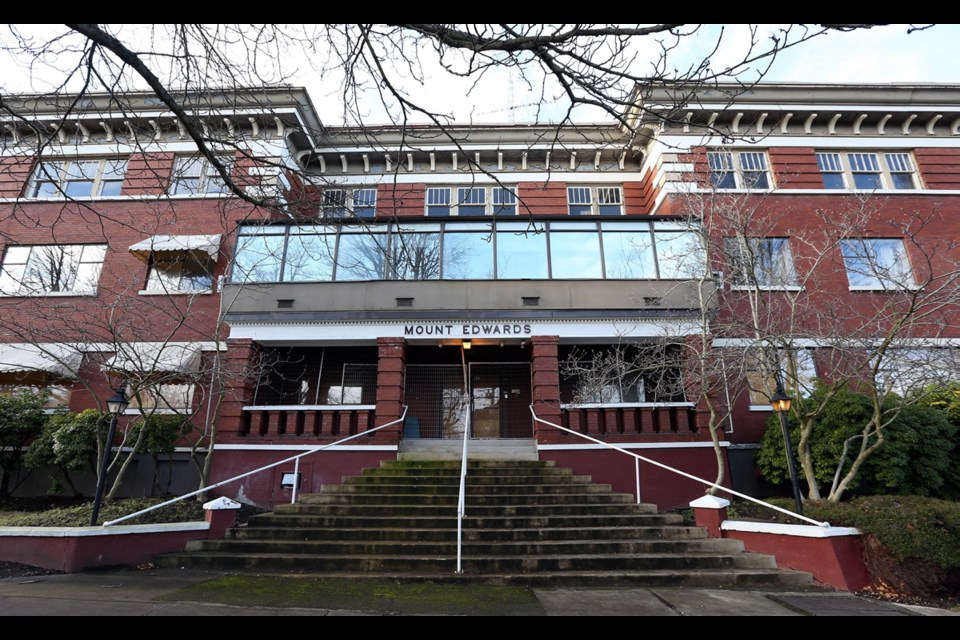Mount Edwards Court will be used for social housing despite being located immediately adjacent to an elementary school.
After a lengthy and divided public hearing on Thursday, Victoria councillors voted 6-1 to support a proposal to rezone the historic building at 1002 Vancouver St., near Rockland Avenue, for supportive housing.
The proposal was made by the Victoria Cool Aid Society on behalf of B.C. Housing.
The project would see up to 93 people in 78 units of supportive housing.
There would be a maximum of 15 studio and one-bedroom affordable rental units for those able to live independently.
Only Coun. Geoff Young was opposed.
Coun. Chris Coleman, a parishioner of neighbouring Christ Church Cathedral whose wife works for the Anglican Diocese, recused himself, and Coun. Pam Madoff was absent.
The former seniors care home was purchased by the province for $3.65 million in 2016 in the wake of the tent city that had dug in on the courthouse lawn, to help address the homelessness issue. Since then, it has been used as transitional housing for 38 former residents of the tent city.
Councillors heard from speakers on both sides of the issue at Thursday’s meeting, including current residents of Mount Edwards Court neighbours, and staff and parents from the nearby Christ Church Cathedral School, which has students in kindergarten through Grade 8.
Speakers raised a variety of concerns, including the impact of homelessness in the neighbourhood, worries about the safety of children at the neighbouring school, the prospect of open drug use and the advisability of having a “low-barrier” shelter adjacent to an elementary school. Low-barrier facilities often do not require tenants to abstain from drug or alcohol use.
“The fact is, this proposal isn’t for low-barrier housing or a shelter,” said Coun. Jeremy Loveday.
“This is housing for seniors who aren’t addicted to drugs and who have been screened for violence in their past.”
Cool Aid executive director Kathy Stinson told councillors the housing would be for people over 50 who need fewer supports and follow a recovery-based model. No illicit substance use would be permitted on the site, which would be staffed round the clock.
Residents with a history of addiction will have to be on a recovery path, Stinson said.
“They can’t have had any history of violence,” she said. “We’re looking at people whose needs are low to moderate.”
Young, noting that Cool Aid’s philosophy is one of non-judgmental assistance, said that by definition, the “housing first” model means people living at the facility will still have issues to be addressed. Proponents of housing first believe they are better able to help people overcome the issues that caused them to experience homelessness — such as addiction — once they have a safe, supportive home to live in.
“That means that there will be impacts on the neighbourhood,” Young said.
“Clearly, we’ve heard a lot about the impacts on the school and the contrast between our policy with regard to proximity to schools for cannabis dispensaries [minimum 200 metres separation] and the policy we seem to be adopting here, which is closeness to a school is no barrier at all.”
Mayor Lisa Helps said the Cool Aid proposal was designed to meet the school’s concerns.
It is not low-barrier housing as was originally proposed, she said.
“For me, this is not a trade-off between a school and a seniors facility. It’s not that at all. Both can coexist,” Helps said.



